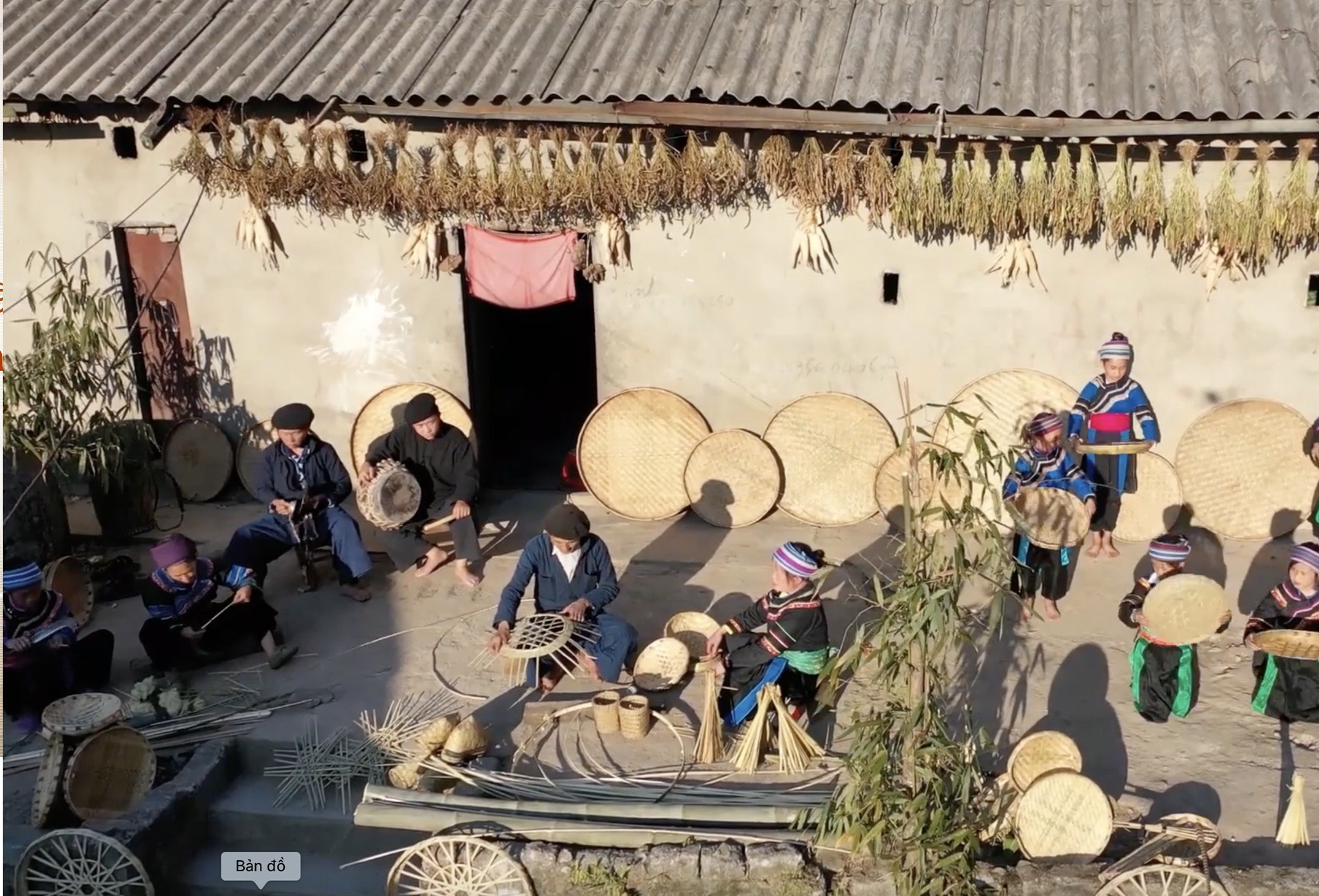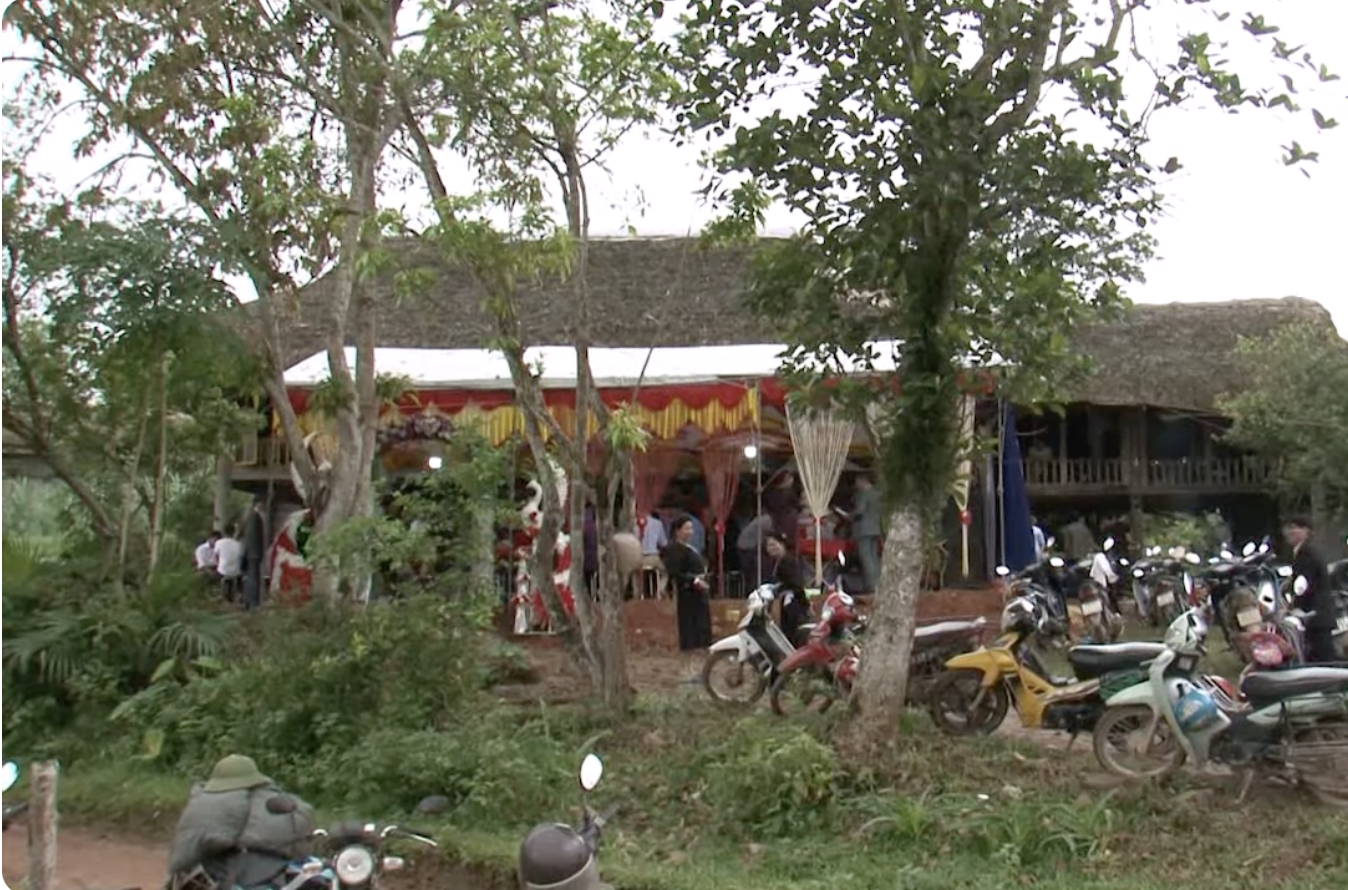As Vietnam’s northernmost province, Ha Giang boasts rich natural beauty and a cultural legacy that dates back to the Dong Son Bronze Age. Prehistoric remains have been discovered in Bac Me and Meo Vac districts.
Home to 19 ethnic groups, where minorities form the majority, Ha Giang's vibrant customs, traditions, and festivals have made it a unique and attractive destination for visitors.
The Ministry of Culture, Sports and Tourism has officially recognized three more intangible heritages from Ha Giang: the forest worship ritual of the Co Lao people in Sinh Lung commune (Dong Van district), the traditional craft of making two-layer conical hats by the Tay people in Xuan Giang commune (Quang Binh district), and the ceremonial folk singing Quan Lang performed at Tay weddings in Quang Binh district.
The forest worship ritual of the Co Lao people in Sinh Lung

Three more cultural heritages from Ha Giang have just been added to Vietnam’s list of national intangible cultural heritage. This brings the total for the province to 30, including six recognized heritages belonging to ethnic minorities with populations under 10,000 such as the Bo Y, Pu Peo, and Co Lao peoples.
The Co Lao are rich in intangible cultural traditions, including folk tales, songs, dances, and crafts. One of their most sacred practices is the forest god worship ceremony held in Ma Che hamlet, Sinh Lung commune, Dong Van district.
The Co Lao believe the universe consists of three realms: sky, earth, and water. Influenced by polytheism and animism, they hold that all living things - trees, crops, livestock - have souls. To ensure good health, peace, and bountiful harvests, they conduct frequent rituals, especially the forest god worship, which holds deep spiritual and communal meaning.
This ceremony reinforces the people's trust in divine presence and support through life’s hardships. It also plays a vital role in preserving cultural identity, educating younger generations about tradition and environmental protection, and fulfilling spiritual needs in an ever-modernizing society.
Traditional craft of making two-layer conical hats of the Tay in Xuan Giang
In Xuan Giang commune, Quang Binh district, where Tay people make up 80% of the population, the two-layer conical hat is a local specialty.
Crafting these hats starts with selecting the right giang bamboo for the frame, which requires skilled weaving. Carefully chosen young palm leaves are softened by fire, then inserted between two layers of the hat frame - a delicate process requiring precision, as even a small error can tear or misalign the materials.
The two layers are stored above the kitchen to absorb soot, making them termite-resistant and giving them a unique black hue. These hats are not only practical for sun and rain protection but also play important roles in traditional Tay wedding rituals.
To preserve this craft, the Quang Binh District People’s Committee has organized training classes. Around 60 households currently participate in hat making, especially during the agricultural off-season, creating culturally significant products for daily use and local markets.
Quan Lang ceremonial singing at Tay weddings in Quang Binh

Quan Lang, also known as "tho lau" in Tay, is a unique tradition performed during weddings, featuring a structured repertoire of poems and songs. The singers (Pu Quan Lang) represent the groom’s family and are responsible for all ceremonial communications with the bride’s family - from betrothal through to the wedding procession.
In Tung Ba commune, Tay wedding offerings include 40 kg of pork, 40 liters of rice wine, 40 kg of sticky rice, and various traditional teas and herbs. Ceremonies include offerings to extended family and both maternal and paternal relatives. Each family sends a group including two male and two female Quan Lang singers, the groom, his best man, and other attendants.
The Quan Lang are elder, respected, eloquent, married individuals with good standing and improvisational poetic skill - most importantly, they must know the Quan Lang songs.
The ceremony’s refined atmosphere is heightened by call-and-response singing, with hosts humbly welcoming their guests. These songs express cultural values and ethical norms in family and community relationships, such as filial piety, respect, and diligence:
"Parents’ labor is like mountains and rivers / As children grow, parents grow old / Only by raising a child does one truly understand a parent’s love..."
They also advocate harmony between husband and wife and responsible family life:
"Let the couple live in peace / Tending the home and fields together / Prosperity from hard work / Not from inherited wealth..."
Though centered on weddings, Quan Lang singing often extends beyond marriage customs to reflect broader societal and historical themes, showcasing the Tay people's cultural depth and creative expression.
With the addition of the forest worship ritual of the Co Lao (Sinh Lung commune), the traditional craft of two-layer conical hat making by the Tay (Xuan Giang commune), and the Quan Lang wedding singing tradition of the Tay (Quang Binh district), Ha Giang now has 30 intangible cultural heritages recognized at the national level. Six of these come from ethnic groups with populations under 10,000 such as the Bo Y, Lo Lo, Pu Peo, and Co Lao.
This recognition is a point of pride for the people of Ha Giang and serves as a foundation for ongoing efforts to preserve and promote the province's cultural heritage in alignment with socioeconomic development.
Ho Nhuy